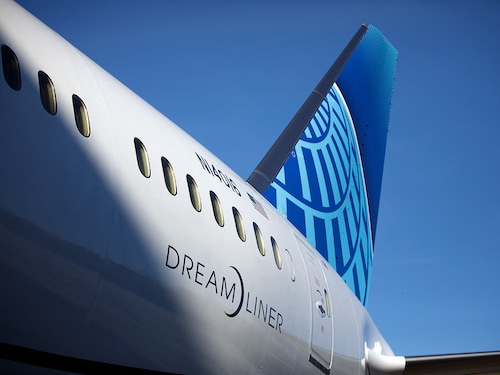Inside the 787 Dreamliner: Boeing's flagship for global routes
The Boeing 787 Dreamliner that crashed in India on Thursday is the pride of the US company's catalogue for long-distance planes


The Boeing 787 Dreamliner that crashed in India on Thursday is the pride of the US company"s catalogue for long-distance planes: a fuel-efficient, wide-body aircraft able to transport up to 330 people.
After first entering service in October 2011, with Japan"s All Nippon Airways, 2,598 of the planes have been ordered by more than 80 airlines around the world, with 889 still awaiting delivery.
Its appeal is its lightweight structure, half of which is made from composite materials, allowing it to burn up to 20 percent less fuel over long distances than older, equivalent-sized passenger planes.
It can be used for "point-to-point" services, meaning it can fly direct to a destination instead of relying on a "hub" system used by heavier aircraft.
Boeing says the use of the 787 has opened up 180 such "point-to-point" routes, more than the 80 initially banked upon.
There are currently three versions of the 787: the 787-8, which can carry up to 248 passengers over distances up to 13,530 kilometres (8,400 miles) the 787-9, carrying up to 296 passengers up to 14,010 kilometres and the 787-10, with up to 330 passengers, up to 11,910 kilometres.
Boeing said it was "aware" of the reports of of the crash and was "working to gather more information".
It was the first deadly crash of a 787 Dreamliner.
Boeing"s programme for the plane had suffered several setbacks, including repeated and costly delivery suspensions between 2021 and 2023, mainly due to assembly faults and manufacturing quality issues.
The US Federal Aviation Administration ended up reinforcing quality assurance checks and inspections on the production lines.
In April this year, the FAA authorised Boeing to step up its production pace to make seven planes a month, from five previously.
In terms of sales, Boeing is facing headwinds.
First Published: Jun 13, 2025, 13:39
Subscribe Now